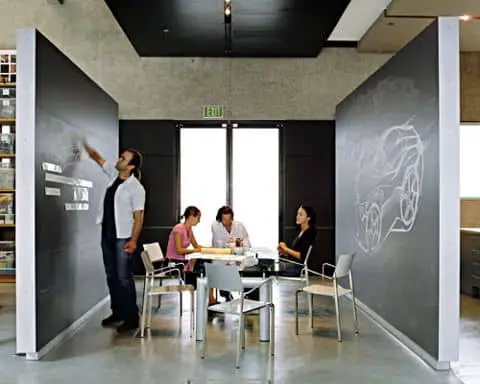Workplace capabilities describe the required skills, knowledge or attitudes for a given task used to evaluate an employee’s effectiveness. Capabilities are arranged into a structure that combines several job roles and the needed competencies to be possessed by the job holder in implementing the task effectively. Workplace capabilities are adopted in big companies with the aim of creating a fair and consistent model to employee development and engagement; The principles help small companies to focus on operational performance and key management.
Workplace Capability Principles
Workplace Capabilities provide employees with a detailed guide of what is required of them concerning performance. They depict the most valued, recognized and appreciated behaviors or attitude in the workplace. The focus shifts from standard academic qualifications and career progression to proven competencies to carry out tasks as shown through tests or profiled workplace experience designed to assess an employee’s or job applicant’s capabilities about the task. Each capacity consists of skill, ability, attitude, personal characteristics or combination.
Workplace Capability Types
Capabilities can be divided into behavioral and technical. Every task includes both. For instance, a team leader’s behavioral skills may combine the ability to work with utmost confidentiality, motivate others and submit weekly or monthly reports on time, while his technical capabilities may include knowing procedures, being able to resolve conflicts and written communication skills. Capabilities are measurable. Thus, an individual can determine the achievement level to be attained to meet the job requirements of that specific competency.
Workplace Capability Structure
This is how a company designs, integrates and evaluates its processes using capabilities. It incorporates sets of skills within HR activities such as employee performance, operational procedures, job design, training. It includes every aspect of measurable job performance relevant to business activities. Designing a capability structure is a complicated process which provides for a specific job and process analysis. Each competency must match equality and legal requirements. For instance, the requirement ‘ ability to carry boxes of paper with a weight of 10 pounds’ could be discrimination against an employee who is disabled. A less discriminating description will state,’ ability to transport boxes,’ meaning using a device or cart to carry out the task.
Pros and Cons of Workplace Capabilities
Capabilities were developed in the early 1980s as a model for assessing and enhancing performance. They become mainstream in significant and complex organizations as they provide measurable and standardized processes for continuity and control. Works are opportune with structure and clarity concerning their roles and how those roles affect the business. A capability structure is seen as a fair and open system for managing performance and development. Nevertheless, the structure should be updated frequently to align with global best practices and changing business needs.
Practically speaking, workplace capabilities provide an overview of the desired performance but do not guarantee an improvement in performance.

Here are 31 capabilities or skill set needed in the workplace.
A. Workplace Capabilities Relating to People.
- 1. Establishing Focus: This is the ability to design and communicate goals concerning the business’ mission.
- 2. Motivation: The ability to facilitate the team’s commitment to work
- 3. Fostering Teamwork: It is the ability to collaborate effectively as a team member, and the ability to show interest, competencies, and success in ensuring groups learn how to work collaboratively.
- 4. Empowering Others: This is the ability to instill confidence in the team’s ability to be successful, especially at taking new tasks; delegating responsibility and authority; permitting employees the liberty to choose the best approach in achieving goals and resolving issues.
- 5. Change management: This is the ability to show support for innovativeness and for any organizational change required to enhance the effectiveness of the organization; kick-starting, sponsoring, and achieving organization change; assisting others in managing the organizational change or transition successfully.
- 6. Developing Others: It is about delegating responsibility, collaborating and coaching team members or employees to enhance their capabilities.
- 7. Performance Management: This is the ability to assume responsibilities for self or employee’s performance, by establishing SMART goals and expectations, tracking success concerning goals, creating room for feedback, and solving performance problems and issues on time.
- 8. Attention to Communication: This is the ability to guarantee the adequate dissemination of information to others who should be kept abreast of it.
- 9. Oral Communication: This is the ability to express in clear conversations and interact with others.
- 10. Written Communication: This has to do with communicating oneself clearly in business writing.
- 11. Persuasive Communication: This is the ability to design and deliver both oral and written communications that inspire and impact the prospective audience.
- 12. Interpersonal Awareness: The ability to recognize, interpret, and envisage others’ feelings and concerns, and to express this awareness empathetically to the team.
- 13. Influencing Others: This is the ability to attract others’ support for proposals, ideas, solutions, and projects.
- 14. Developing Collaborative Relationships: This is the ability to build, manage, and strengthen partnerships among the team and with others outside the organization who can supply information, support, and assistance.
- 15. Customer orientation: This is the ability to show concern for meeting the needs of clients within and outside the organizations.
B. Workplace Capabilities concerning Business
Prevention and Problem Solving Cluster
- 16. Scientific Information Gathering: This is the ability to discover the data needed to solve a challenge, search that information from respective sources and employ skillful questioning to extract the data when others are passive in disclosing it.
- 17. Analytical Thinking: This is the ability to solve a problem or address a challenge by employing a logical, sequential and systematic approach.
- 18. Forward Thinking: This is the ability to envisage the aftermath and effects of circumstances and adopt necessary action to be ready for necessary contingencies.
- 19. Conceptual Thinking: This is the ability to discover workable solutions by taking a holistic, theoretical or abstract perspective.
- 20. Strategic Thinking: This is the ability to analyze the competitive position of the organization by examining the industry and market trends, potential and existing customers(external and internal), and strengths and weaknesses in comparison to competitors.
- 21. Technical Expertise: This is the ability to demonstrate skill and in-depth knowledge in a specialized area.
The Achievement of Results Cluster
- 22. Initiative: Recognizing what ought to be done and taking actions before being instructed or before the situation demands it.
- 23. Entrepreneurial Orientation: This is the ability to search for and take profitable entrepreneurial opportunities; readiness to make an informed decision on it, as well as calculated risks to attain the business goals.
- 24. Fostering Innovation: This is the ability to design, sponsor, or support transition from the old way of doing business to the improved methods. It also has to do with supporting the new model, products, technologies, or procedures.
- 25. Result Orientation: This is the ability to focus on the expected result of self or unit’s work, establishing challenging goals, channeling effort on the expectations, and meeting or surpassing those expectations.
- 26. Thoroughness: Ensuring accuracy of information and completion of work done by the team; strategically planning and preparing for presentations and conferences; creating a follow-up structure to ensure commitments and agreements have been attained.
- 27. Decisiveness: The ability to take difficult decisions on time.
C. Self-Management Competencies
- 28. Self Confidence: This is having faith in one’s initiative, ideas and capability to achieve giant strides; readiness to assume a solitary position when faced with opposition.
- 29. Stress Management: This is the ability to work or function under pressure and maintain self-control when faced with hostile situations and worst provocation.
- 30. Personal Credibility: This is demonstrating concern that one is seen as reliable, responsible and trustworthy.
- 31. Flexibility: This is being opened to new and different ways of doing things; willingness to overhaul or modify one’s chosen methods of getting things done.
Capabilities Requirement by Employers

Some employers require some key competencies that are considered desirable for employees to have.
For instance, while interviewing and assessing applicants, those key competencies are adopted as benchmarks in rating and evaluating candidates.
A company will generally classify several vital competencies or skills to look for in applicants at interview.
Assessment concerning each competency is usually based on answers to questions based on that specific skill.
Some of those capabilities will include:
- 1. Teamwork
- 2. Commitment to career
- 3. Responsibility
- 4. Career Motivation
- 5. Commercial awareness
- 6. Decision Making’
- 7. Communication
- 8. Leadership
- 9. Results orientation
- 10. Problem-solving
- 11. Trustworthiness & Ethics
- 12. Organization
- 13. Core Technical Skills
Capabilities that Give a Business a Competitive Advantage
The essence of workplace capabilities is to deliver value to clients. Though it is always hard to develop, that is what it takes to stand out.
These capabilities give the business a competitive advantage.
1. Innovating Cutting edge products or services
In a bid to produce a ‘cool’ design, Apple introduced its iPod for customers to download music in a cool way and enjoy good music.
2. Quality and Reliability
Automakers in Japan became a market leader by making quality one of their core capabilities.
3. Exceptional Customer Care
Client engagement is also an essential capability. Any company that fails to respond to feedbacks will stand the risk of losing customers to competitors.
4. Flexibility
Staying competitive would mean exploring new and different ways and methods in meeting customer needs.
5. Internet Presence and Niche Marketing
Superior Internet Presence and strategic client targeting would give your business a competitive advantage.
Workplace capabilities Framework
Workplace capabilities Framework is an essential model that determines whether a business becomes more sustainable or due for extinction. Companies or occupational therapists should implement a standardized and fair measurement of employee’s capabilities before commencing work, or after an injured employee resumes work.
Related Questions
What is the difference between conduct and capability? Capability is when an employee underperforms as a result of poor skills, while conduct has to do with behaviors not meeting the required expectations.
Can you be sacked for capability? Employees can be relieved of their jobs if they lack the capability; for instance, poor performance is a significant reason for dismissal in the workplace.
What is Workplace capability? Capability is the ability of a worker to carry out an assigned work to the required standards. This is assessable by reference to an individual’s skill, aptitude, attitude, health or any technical or mental quality in line with the assigned job they are employed to do.


